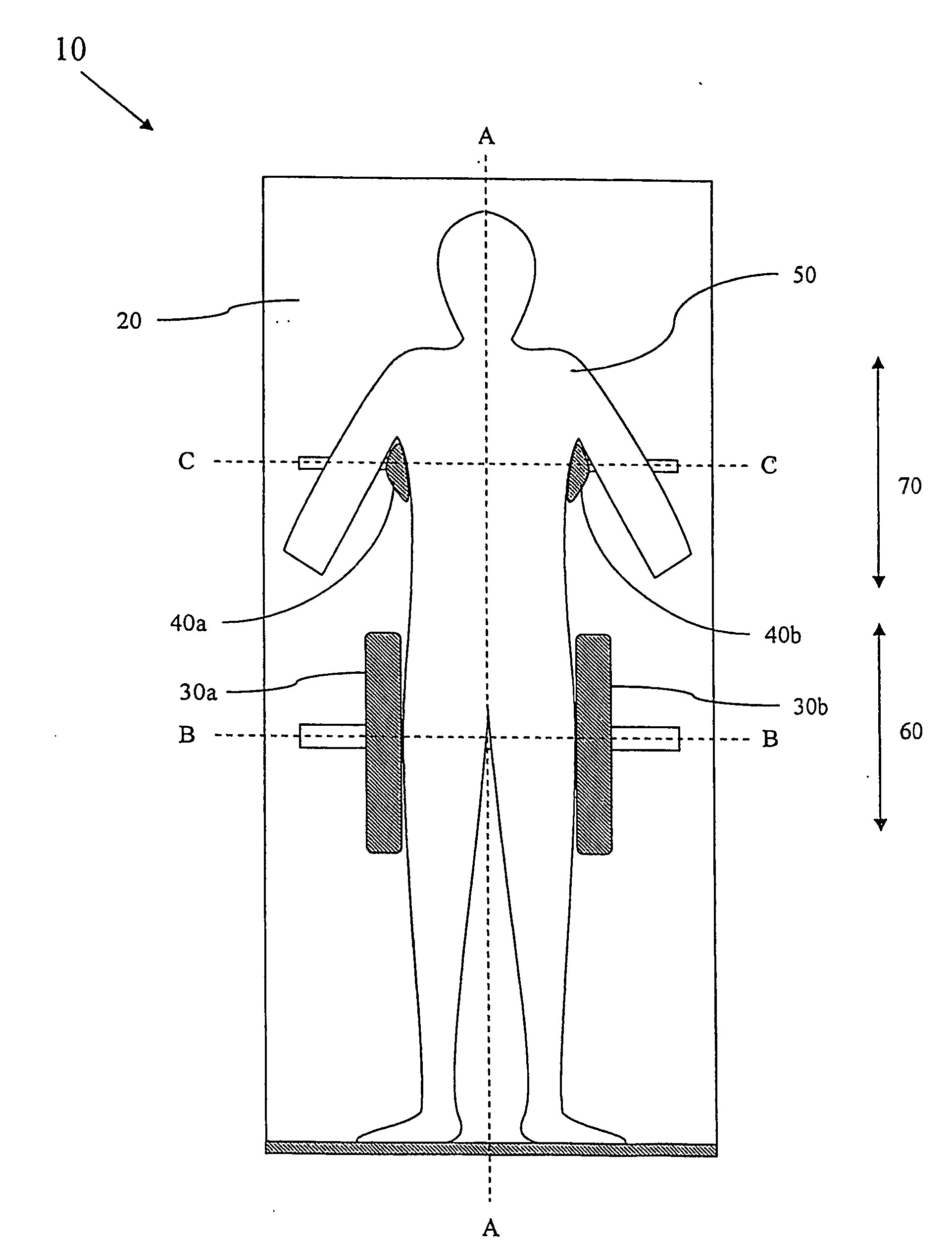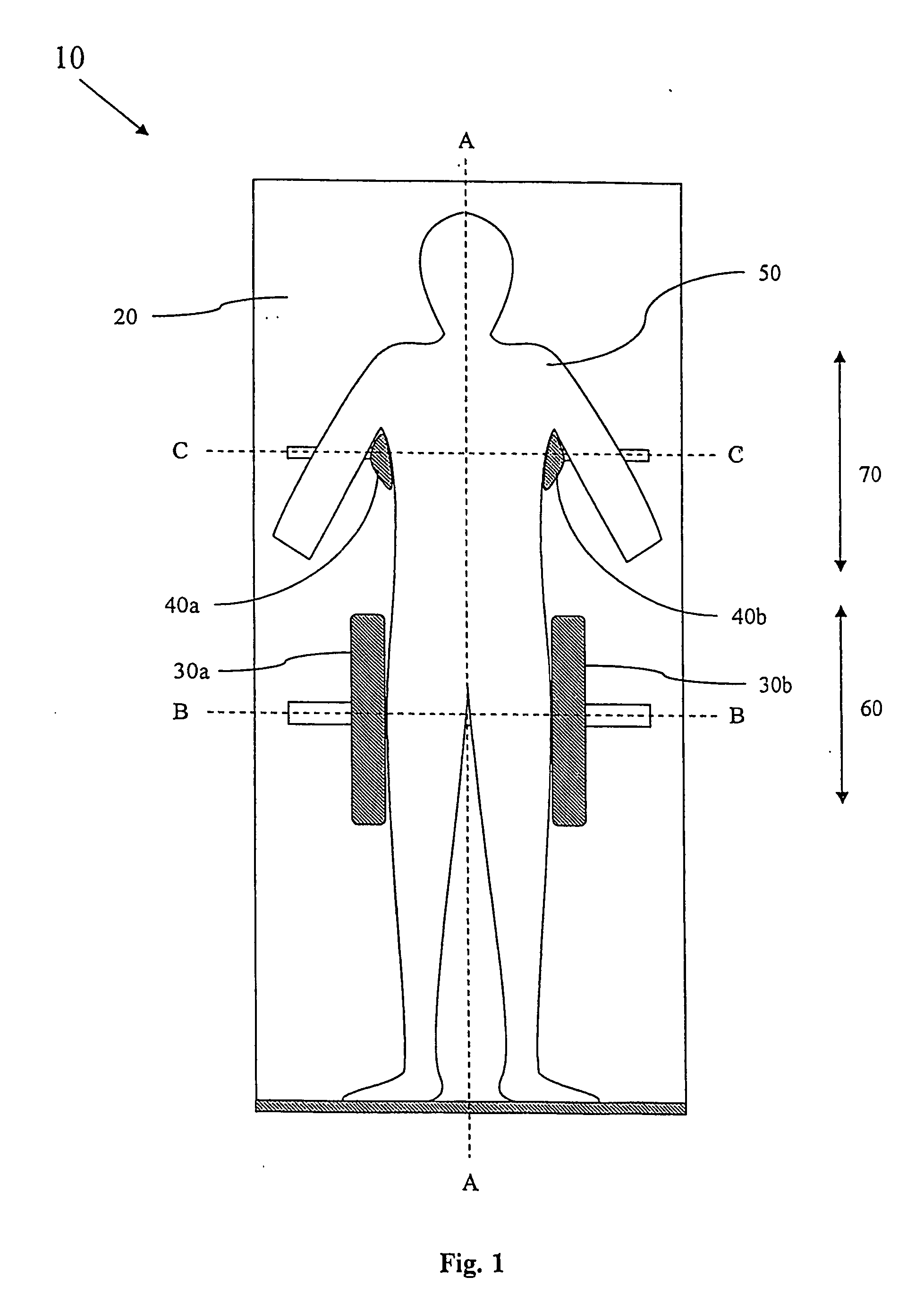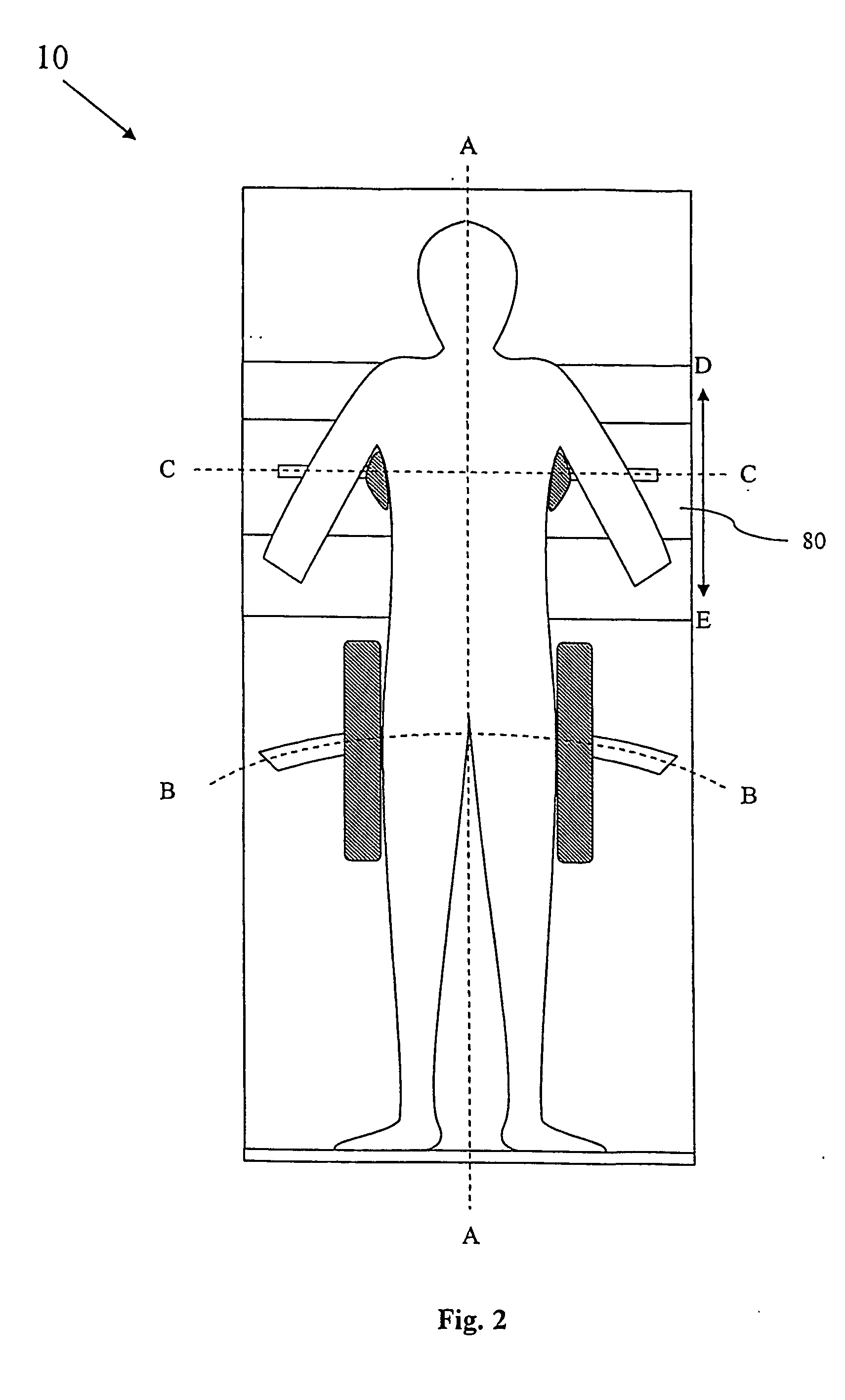Patient repositioning device and method
- Summary
- Abstract
- Description
- Claims
- Application Information
AI Technical Summary
Benefits of technology
Problems solved by technology
Method used
Image
Examples
Embodiment Construction
[0021]FIG. 1 schematically shows one embodiment of the patient repositioning device 10 according to the present invention. As discussed above, repositioning devices 10 of tilting type presents a large number of advantages compared to other prior art repositioning devices, but the known devices of tilting type tend to be complicated to use.
[0022] Like the device disclosed in U.S. Pat. No. 5,983,424, the repositioning device 10 according the present invention comprises a patient supporting panel 20 and at least one pair of laterally (along the broken lines B-B and C-C respectively) adjustable side support structures 30a,b, 40a,b for sideways supporting a patient 50 on the supporting panel 20. But in order to achieve quick and reliable centering of the patient 50 relative the panel 20, each pair of side support structures 30a,b, 40a,b are linked by a link arrangement, which is described below, so that they automatically are centered about a longitudinal axis A-A of the supporting pane...
PUM
 Login to View More
Login to View More Abstract
Description
Claims
Application Information
 Login to View More
Login to View More - R&D
- Intellectual Property
- Life Sciences
- Materials
- Tech Scout
- Unparalleled Data Quality
- Higher Quality Content
- 60% Fewer Hallucinations
Browse by: Latest US Patents, China's latest patents, Technical Efficacy Thesaurus, Application Domain, Technology Topic, Popular Technical Reports.
© 2025 PatSnap. All rights reserved.Legal|Privacy policy|Modern Slavery Act Transparency Statement|Sitemap|About US| Contact US: help@patsnap.com



